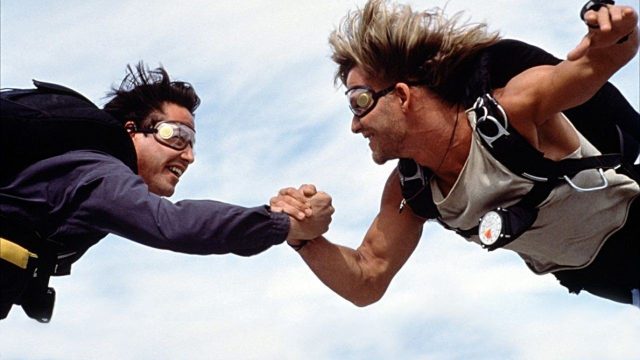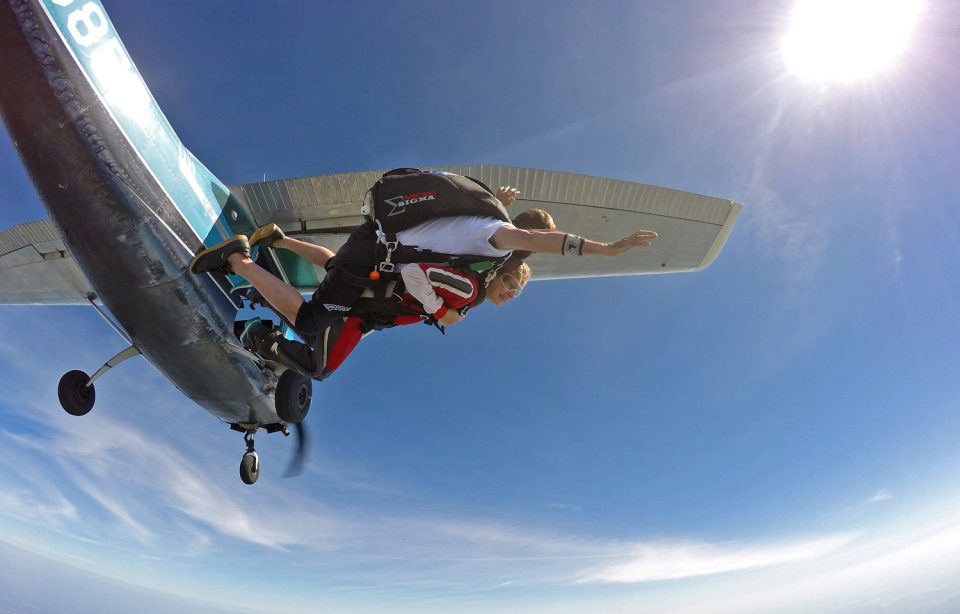Skydiving Movies – And The Lies Hollywood Tells
Skydiving Tips
Posted by: Wisconsin Skydiving Center 6 years ago
Most people don’t skydive. It’s safe to assume then that most screenwriters don’t skydive. Which results in the fact that Hollywood gets most skydiving movies hilariously wrong. Wanna get woke? Here’s your guide:
1. Any parachute deployment altitude is fair game
In a skydiving movie, as long as you deploy your parachute before you hit the ground, you’re good to go. As a matter of fact, it doesn’t seem to matter when you deploy. Or if you’re carrying heavy equipment when you do. Or if you happen to be upside-down, or your lines are a total spaghetti mess. Injuries that happen during the deployment of a parachute aren’t things with which movies are all-too-very concerned. Need some examples? Look no further than this fun mash-up of skydiving scenes in movies:
In real life, there’s a pretty big window in which a skydiver may choose to open their parachute. You have to wait a couple of seconds after jumping out of the airplane (to avoid a deadly parachute-airplane embrace), but deploying nice and high — called a “hop-’n’-pop” in the trade — gives a skydiver a good long time to enjoy that canopy ride down. The window for deployment closes, on most jumps, by a couple thousand feet over the ground. Most skydivers will initiate a deployment sequence between 3,500 feet and 3,000 feet.
2. We don’t have forever to spend
The terminal velocity of a free falling human being is 170 feet per second. Do the math, and that means that we’ll fall about 3,000 feet in 20 seconds. Given a business-as-usual jump altitude of around 13,000 feet, that works out to about one minute of fabulous freefall before reaching that aforementioned safe altitude for deploying one’s helpful little parachute.
So is there really time to have a conversation about life, the universe, and everything – as so many movies will have you believe? (We’re looking at YOU, Bucket List). Even if we could actually hear each other talk … No.
3. We have options
In the movies, parachutes are often treated as a one-and-done. In reality, we have not one but two parachutes on any given skydive.
As well as the primary parachute (the “main”), which we deployed in the ordinary manner, we’ve got a backup (the “reserve”) to use in case it all goes pear-shaped. We even have automatic mechanisms which automatically deploy that reserve chute if nobody gets around to deploying the main. The latter is called an “AAD” or “Automatic Activation Device” – and we’ll cheer for any screenwriter who manages to work that little detail into an action scene.

4. First timers aren’t required to just figure it out
There’s always that moment in the movies, right? Where a total noobie picks up a parachute off the floor of a crashing airplane and has to figure out what goes where in the ten-or-so seconds left before the inexplicable auto-destruct sequence goes off? Yeeeeeah.
In the real world, you aren’t under anything even resembling that kind of pressure. First-time skydivers always have a buddy. On a tandem jump (by far the most popular), the skydiver is accompanied by an über-experienced instructor who’s literally strapped to the newbie’s back. If an inductee wants to go full-on and do a solo skydiving training jump to kick off her skydiving career, she exits the plane with her own parachute, yeah — but with two instructors, one on either side of her for the whole jump.

So: If you’re looking for a first-time skydive pursued by zombies, from a skyscraper, under fire, with a parachute you just stole from the Russians, Wisconsin Skydiving Center might not be your first choice. For any other skydiving need you may have, however, we’re your huckleberry.
Categories:
You May Be Interested In:

Can You Skydive With Dentures?
2 months ago by Wisconsin Skydiving Center

Why Is Skydiving So Expensive?
4 months ago by Wisconsin Skydiving Center

Can You Skydive In The Winter?
5 months ago by Wisconsin Skydiving Center

23 of the Best Skydiving Quotes and Captions for Social Media
12 months ago by Wisconsin Skydiving Center